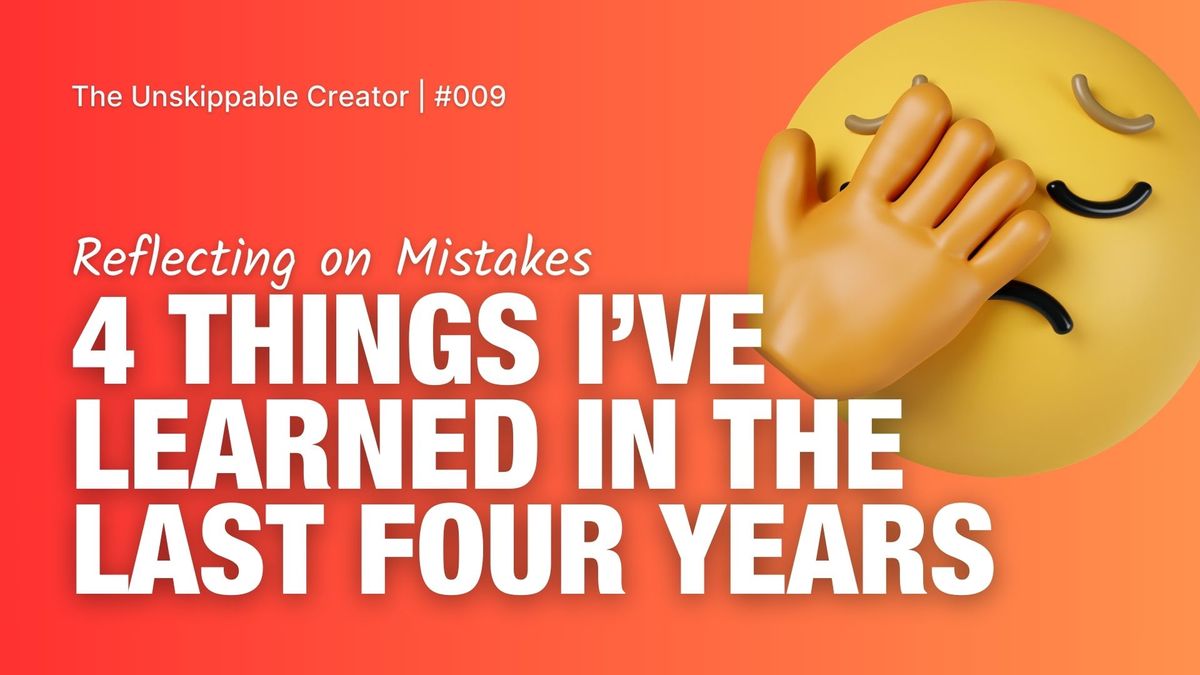I just wrapped up Q4 roadmapping and was reflecting on what worked and what didn't.
But because it's almost the end of the year I want to zoom out beyond the scope of a quarter and share with you 4 lessons I've learned in the last four years at VEED.
Here's the breakdown of the lessons
- Don’t repurpose without purpose and the capacity to maintain a multi-channel presence
- Focus on 1-2 content channels if you’re solo or have a small team
- Align your content to meaningful outcomes (and learn to talk about it in your boss’ “language”)
- Focus 80% on what works and 20% on exploring
Keep reading to dive into more detail ☺️
1. Don’t repurpose without purpose and the capacity to maintain a multi-channel presence
🧐 Why aren’t we on Threads?
🧐 Why aren’t we on this?
🧐 We should be on that!
Non-content people are too detached from the process to know what it means to be successfully present on a new content channel. They get shiny object syndrome followed by an intense burst of temporary FOMO which they dump on you.
Add to this the fact that social media personalities love to oversimplify content repurposing down to making a gazillion pieces of content from one keynote and putting those everywhere just because you technically could. Maybe you could make 3, 9, or 79 pieces of content but what good would those be if they were half-assed and you lack the people-power to maintain the channels they’d live on?
Repurposing is a lot of work before, during, and after the content is repurposed.
You have to know which channels you’re willing and able to maintain an active presence on, what resonates on those channels, which content pieces you could then repurpose from to create content for those channels, and then make sure you maintain a healthily active presence on those channels.
You can make repurposing work for you as a small team (or one-person team) but you’ll need to be wise about the number channels you pick in terms of impact and effort and how those channels “play” together.
For example, in the early days of VEED when we focused just on blogs, landing pages, and YouTube videos these all worked nicely together. A video that did well could often inform what could work on the blog so we’d repurpose that idea for the blog, insert the video into the piece, and embedded and linked the blog and video into relevant landing pages.
2. Focus on 1-2 content channels if you’re solo or have a small team
When you’re small you often compare yourself to the giants. The giants are 20, 70, and maybe even 500 steps ahead of you in terms of revenue, team size, and wisdom.
Because of their size and resources, they can afford to do more and do it well.
Your little operation can’t.
(At least not yet!)
I think people are scared to focus on just 1-2 (maybe 3) channels because everyone else is everywhere else. It’s scary to make a bet and go all in on a few channels when you’re starting. But, in my experience, it’s scarier to be spread thin on seven different platforms and therefore do an, at best, mediocre job everywhere.
When I started at VEED we tried to do too much everywhere. When we scaled back we then had the time and energy to do more concentrated meaningful work one channel at a time.
It's easy to fall into the trap of looking at HubSpot or some other large company and use them as a model. While you can certainly learn loads from people way ahead, the way they do things now isn't a good playbook for what a company at a totally different stage should do.
Do things today that you can build on later.
3. Align your content to meaningful outcomes (and learn to talk about it in your boss’ “language”)
Everybody wants content, not everybody knows why they want it or how exactly it contributes to a business. It’s like everyone else is doing it so we should too. But what happens when the people signing your paychecks don’t really understand what all this content is for?
Thankfully this never happened to me at VEED but it did at other jobs where I was less experienced.
Your job is to prove the value of content and then figure out a way to communicate it so people get it (and hopefully invest more into your team).Your boss, their boss, and investors don’t care if you think it would be “really valuable” if you did A, B, and C or how working on X, Y, and Z could “blow up”. Vague buzzwords are poison.
When you’re talking shop with your boss and the other higher-ups you need to be ultra-specific about what ‘valuable’ means in terms of how the metrics they care about would be affected.
Aligning your KPIs to these metrics or metrics that have an effect on these metrics is key to helping you make your case.
For example, here are my KPIs:
My KPIs directly affect people’s engagement with our product, content, and how it translates into new customers.So when we recently went viral with our Eye Contact Correction launch I shared how the blog had a 44% content to product rate and drove 177 paid signups (635 total signups if you count free accounts created).
Eye contact correction “blew up” but defining how helps open the eyes of people who may not already be aware of the power of content and a proper marketing launch.
4. Focus 80% on what works and 20% on exploring
You know those things you have a good gut feeling about but no concrete evidence to support why they're worth investing more into?
Around 80% of the time I need to make sure my budget and focus is invested into the things that work and that we're working towards as a company. The other 20% is for lower priority things or things I want to experiment with.
For example, lets say you want to start a newsletter but your company is not quite there yet ready to invest in full-time help or more budget for freelance help.
You could start super small with a monthly email you either do yourself or get help from a freelancer for writing or design. This email project should take no more than ~20% of your time.
Over time you'll begin to gather insights on how the newsletter is performing to (hopefully) help you make your case.
This was just a rough example though. You can apply this to anything you've been wanting to do by finding a simple low-effort, low-cost way to test the idea.
Thanks for reading the ninth edition of the Unskippable Creator. I can't believe it'll be a year soon since I started this!
Have something you'd like me to cover next?

